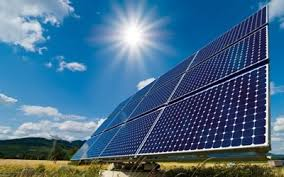Special topics
 Over the past couple of years, Ghana has faced significant challenges in reforming and providing the required stimulus for the development of its energy sector. These structural and institutional challenges have resulted in a general decline in service levels across generation, transmission and distribution fragments of the industry.
Over the past couple of years, Ghana has faced significant challenges in reforming and providing the required stimulus for the development of its energy sector. These structural and institutional challenges have resulted in a general decline in service levels across generation, transmission and distribution fragments of the industry.
In response to these, the President, Nana Akufo Addo, in his recent state of the nation’s address, proposed a number of policy interventions chiefly among which includes his Government’s preparedness to encourage increased private sector investment in utility-scale solar energy projects, as well as accelerate the development of mini-grid solutions in off-grid and island communities for lighting, irrigation and other economic activities’.
Within the Ghanaian context, the power generation landscape is dominated by an output from gas thermal and hydroelectric power plants. These sources hold significant promise if harnessed efficiently despite their negative environmental footprints.
Ghana’s power industry is fraught with manifold challenges such as non-availability and high cost of gas, operation and maintenance difficulties, defective delivery and planning systems as well as huge debt issues.
Hence, it is time for our energy managers change the status quo and accept that other energy sources can play a significant role in addressing our energy deficit fiasco. The focus should be on developing credible policies aimed at encouraging investments in renewable energy sources such as wind and solar power.
Ghana’s geographic location around the equatorial sun-belt is very strategic for her to exploit the abundant solar energy resources. Wa, the capital of the Upper West region, has the highest level of solar irradiation (5.524 KWh/m2-day) across the country. May is the month with the highest solar irradiation (5.897 KWh/m2-day), with August recording the lowest measurement (4.937kWh/m2-day) in Wa. Akim Oda, on the contrary, is the location that records the lowest radiation (4.567kWh/m2-day) measurements across the country. The highest measurement in Akim Oda was recorded in the month of April (5.176kWh/m2-day) and the lowest in August (3.802kWh/m2-day).
Table 1: Summary of Solar irradiation in kWh/m2-day – SWERA Report
| Synoptic Station | Ground
(kWh/m2-day) |
Satellite
(kWh/m2-day) |
% Error |
| Kumasi | 4.633 | 5.155 | -11.3 |
| Accra | 5.060 | 5.180 | -2.3 |
| Navrongo | 5.505 | 5.765 | -4.7 |
| Abetifi | 5.150 | 5.192 | -0.8 |
| Akuse | 4.814 | 5.58 | -15.9 |
| Wa | 5.520 | 5.729 | -3.7 |
| Akim Oda | 4.567 | 5.177 | -13.3 |
| Wenchi | 5.020 | 5.093 | -1.5 |
| Ho | 5.122 | 5.223 | -2.0 |
| KeteKrachi | 5.280 | 5.345 | -1.3 |
| Takoradi | 5.011 | 5.200 | -3.8 |
| Yendi | 5.370 | 5.632 | -4.8 |
| Bole | 5.323 | 5.570 | -4.6 |
The data above clearly tells that sunlight will provide useful solar energy for about 4 to 7 hours per day because during the early hours and late hours of the day the angle of the sun’s light is too low.This level of solar radiation across the country can support the huge deployment of solar power infrastructures designed to primarily feed into the national Grid.
Ghana has an unreserved forest land of area of 5,000 sq km, with an average radiation of 5 kWh/m2-day. With a thumb rule of developing 1MW Grid connected Solar PV power plant on every 4-acre land, Ghana has the potential to develop over 240,000MW or 240GW of Solar power assuming 80% (4,000 sq km – 900,000 Acres) of this land surface is used to harness solar power for the country.
Currently, the total installed capacity of Solar power in the country stands around 120MW which is about 0.0005% of our solar power potential that has been tapped.
Table 2. Installed Solar PV in Ghana.
| Renewables (excluding hydro) | MW | |
| VRA Solar | Solar | 2.5 |
| BXC Solar | Solar | 20 |
| BPA Solar | Solar | 50 |
| Other Distributed Installations | Solar | 47.5 |
| Sub – Total | 120 |
On a competitive scale, solar Power in Ghana is way below that of other widely known energy sources due to economic drawbacks and other deep-rooted policy inertia. Accordingly, for Ghana to make any significant progress in developing its renewable energy potentials, major policy initiatives must be developed and leveraged upon to drive interest and encourage investment.
The government through its agencies such as the Ministry of Energy and the Energy Commission must develop proactive fiscal, regulatory and financial stimuli in collaboration with private sector organisations that will ensure a smooth take off of the emerging industry.
For the industry to be kick-started, we must not re-invent the wheels, as some of these instruments have been used in both developed and developing countries to achieve significant deployment of grid-connected and off-grid solar power plants. We can learn from Countries such as India, China and the Spanish models to evaluate how we can adapt or adopt workable framework from these countries to suit our peculiar circumstances.
Solar projects are easily scalable with the possibility of deploying thousands of units within a short period. With appropriate policy direction and necessary incentives, the sector will witness remarkable growth in the coming decades with backward linkage opportunities in manufacturing and job creation.
Source: http://www.myjoyonline.com/opinion/2017/March-16th/the-sad-story-of-ghanas-untapped-240000mw-solar-power-potential.php